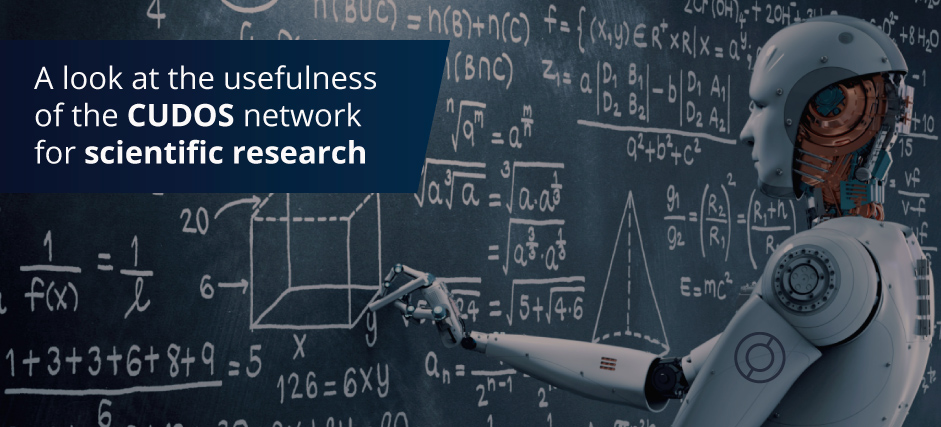In this article we will make a presentation on the usefulness that the CUDOS network has for scientific research. Thanks to its capabilities, this blockchain can be used by scientists to carry out their research, broadening the horizons to obtain efficient results.
Capabilities in the scientific field
Technology is a great ally of scientists when conducting research, whether it is required to analyze data or generate tests, technological tools provide the ability to run simulations to obtain accurate data, which can then be processed in order to obtain exact results, which serve as support to test theories, or to carry out experiments.
A scientific investigation requires years of trials in order to verify or make sure that everything proposed is correct. One of the utilities that scientists look for in field tasks is the ability to process and analyze data with great speed, in order to determine and analyze the results. Blockchain technology has contributed greatly to having new possibilities related to experimentation.
One of the great problems that scientists face when uploading data for digital analysis is to be sure that there is no alteration in the information, since any modification, no matter how minimal, can result in catastrophic results that completely ruin an investigation, leading to wasting years of work.
Blockchain as a tool for scientists
Without a doubt, scientists have found in blockchain technology an extraordinary utility to be able to carry out experiments. The capabilities that blockchains provide are very attractive for conducting various investigations, since in them researchers can obtain an incorruptible security framework, which generates the ideal ecosystem for obtaining accurate results.
Blockchain gives the possibility of decentralizing the network, in order to obtain real results without depending on any central node, therefore, scientists can carry out large loads of data, with the peace of mind that this information will not be adulterated. Thus, when having to load and compare new data with the previously established ones, you can have the guarantees that there was no modification that alters the results.
To these qualities are added those granted by the new generation blockchains, such as CUDOS. In this, the possibility of using distributed computing capacity in the cloud is offered, but with the support of blockchain technology, which allows decentralizing the necessary quotas, with the purpose of reducing costs and speeding up transaction times in a surprising way.
Research possibilities with CUDOS
CUDOS has qualities that make it an ideal option when conducting scientific research, given that its main objective is to provide computing in a fully distributed manner, and in this way, if an investigation requires computing capacity, it can be obtained from the network, without the need to invest in physical hardware, which solves in the first instance a great problem related to operating costs.
In addition, in the case of researchers who need to carry out simulations to reach exact conclusions, they can also draw on CUDOS technology, since it is ideal for this field of application, being able to obtain the necessary power from the network to generate almost exact representations. , that can simulate real environments digitally for experimentation purposes.
As anticipated in previous lines, a scientific investigation also requires the analysis and loading of a large amount of data, in order to be able to have that information in the future and have the guarantees that it has been correctly protected. This is where the CUDOS network also offers excellent possibilities, since it facilitates the storage of data in the cloud, with the unique security support that blockchain provides.
Final words
As we can see, according to the analysis of the article, the technology offered by CUDOS allows scientists from any part of the world to carry out their research, taking advantage of the benefits of distributed computing in the cloud, with the security support and unique characteristics provided by the blockchain technology.

